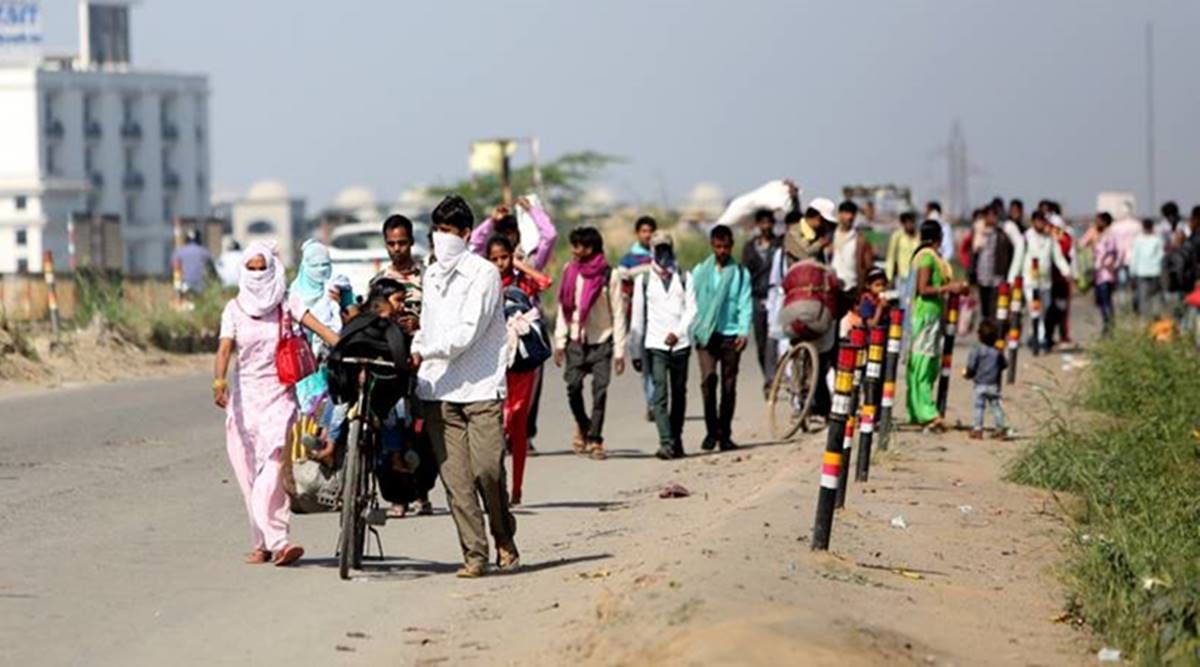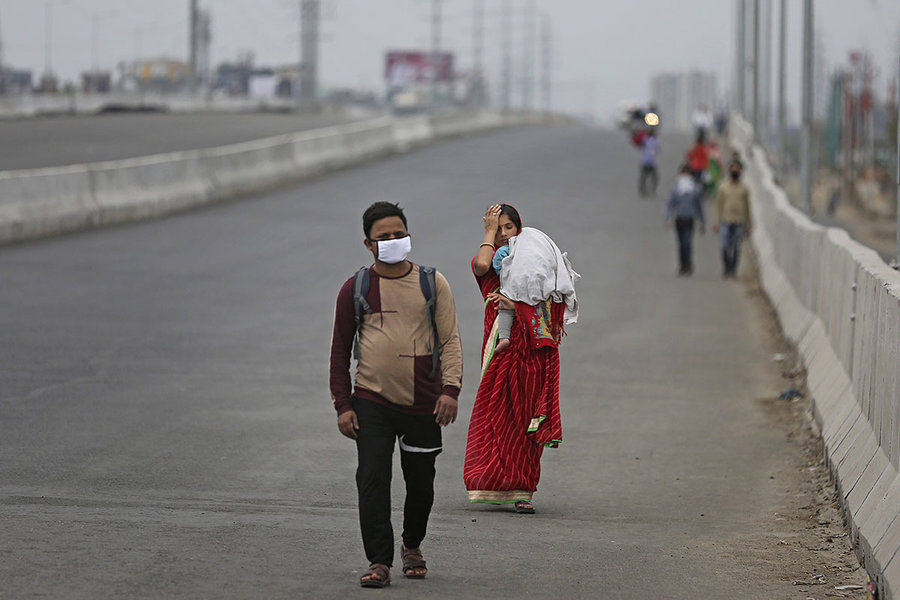“Migrant labourers will return to cities. But, their migration will be different than before”
On what basis will migrants and workers be able to stay back in their villages and homes and for how long? Will they be provided adequate means of livelihood and employment at the local level?

At a time when the whole world is reeling under an unprecedented coronavirus crisis, the future seems grim despite the innumerous efforts being made to overcome the crisis. In such a situation, people have also begun mulling over the future of migrant labourers who have returned or are returning to their homes from urban and industrial towns in India after suffering the tragedy of the lockdown.
Some believe that the people subjected to unemployment, penury, starvation and deprivation during the lockdown in the cities would now hardly return from their villages and homes to the places they have left for home. On the other hand, some people are also saying that it is still quite early to judge the situation because there exists policy as well as pragmatic uncertainties pertaining to the future course of action in front of the central and state governments. Besides, the industries that had provided employment to these labourers and are presently closed down.
It is important to note one fact here that not all the people migrating from rural and town areas to urban and industrial areas in hope of livelihood and employment migrate as labourers. A large part of these are also migrants who form the vital component of the extensive ecological mechanism of those urban and industrial areas, and earn their daily livelihood or income in areas such as manufacturing, services and small-scale trade.
A number of categories such as daily wage labourers, rickshaw pullers and e-rickshaw pullers, street vendors, small scale repairers, salons, ironsmiths, carpenters, etc, can be seen and analysed in this context.
We now return to the question of “will the migrant who have returned home, having faced dire circumstances during the lockdown, return to work again when the situation goes back to normal?” The simplest answer would be: “They must return to work, but this time for a few months. Their migration will be widely different than before.”

This answer is definitive for it is based on the facts and in its background are findings and conclusions of recognised and ground-level past socio-economic studies. A few days ago, at the press conference of the Indian Railway Board, it was informed that by the end of May last, more than 52 lakh migrants have been transported by more than 3,600 labour-special trains to the nearest railway stations to their villages from various towns and industrial centres.
Here, we will not discuss the plight of the homebound migrants and the trains that had reportedly strayed off the route. In the same press conference, the Indian Railway Board, also underlined the fact that about 90 per cent of these 52 lakh migrants belonged to Hindi speaking areas and about 80 per cent of them were from Bihar.
These trains have transported migrants from Tripur Sidco industrial area of Tamil Nadu to places like Motihari near Nepal border and Madhubani. The plight of the migrant workers staying in rented accommodation around the industrial and agricultural areas of Punjab, Mumbai, Pune and other cities of Maharashtra, Haryana’s Manesar and in villages flanking the NCR industrial area, is already in common knowledge.
What has been the reason is that such a large number of people from states like Bihar have been bound, not motivated, to travel to these distant places to work as migrant labourers. The use of the word “bound” seems to be more relevant because when even the lowest means of livelihood are not available to them at the local level, they have to go out to find work wherever they can.
Most of these people working on minimum wages and systematically deprived of labour rights by various measures, first come alone to work, then bring their families along as soon as they see a little stability. Such has remained the natural process under migration-based labour planning. Those who have or are left behind have no other option but to stay there.
On what basis will such migrants and workers be able to stay back in their villages and homes and for how long? Will they be provided adequate means of livelihood and employment at the local level? Will it be possible to address their daily needs quickly? Will they be able to look after their young children, elderly parents, grandparents, and other relatives in the event of unemployment?

In the present scenario, it seems highly improbable, especially, in the context of the entire Bihar and some areas of West Bengal, Odisha, Uttar Pradesh, Uttarakhand and Himachal Pradesh, whose local economies are termed as “the money order economy”. It does not seem possible in the near future of them not returning to their places of work.
Forgetting the tragedies during homecoming and the difficulties endured during the lockdown, they would yet again head back to urban and industrial centres. There have also been reports that factories and industrial production centres are being reopened in a phase-wise manner, and a few out of these migrants, who had returned home by road, have yet again begun leaving for their workplaces.
The farmers of Punjab are also reported to have taken back the agricultural labourers from some districts of central Bihar through buses and trucks to Punjab by promising them more wages and additional facilities. The order of the migrants to return to work from their villages and homes will continue and will grow progressively with each passing week.
Certainly, people with permanent jobs as well as temporary jobs with PF, health benefits and other similar labour facilities would also return to work as soon as the situation turns slightly favourable. It is also certain that for the coming few months, or for a couple of years, people will prefer to migrate alone by not taking their family along.
However, unskilled and semi-skilled wage labourers would resist returning if they get even half the work of urban and industrial centres at the local level. Certainly, by learning positively from the experiences of the economic crises that these people were subjected to during the lockdown in corona crisis, most people will also adopt savings habits so that they are able to tide over bad time during similar other emergency crises.
(Dr Sushil Kumar is an independent journalist and writer)

